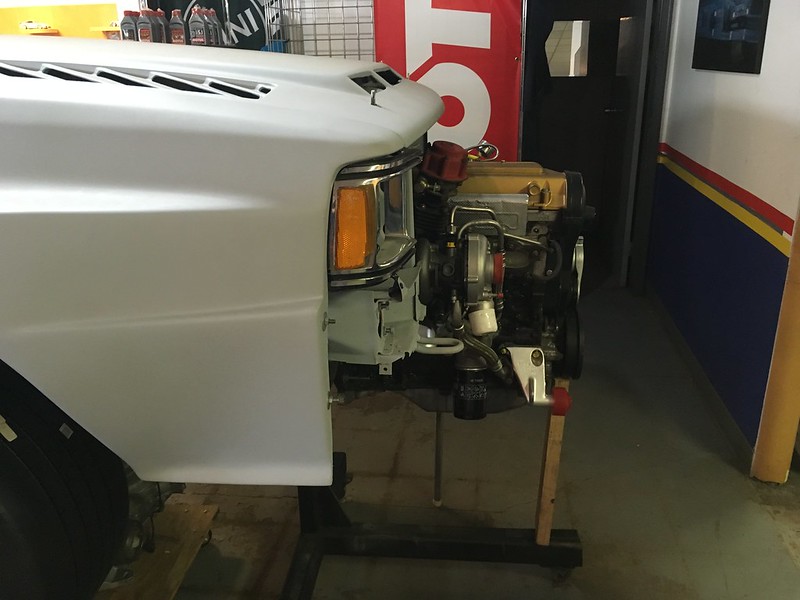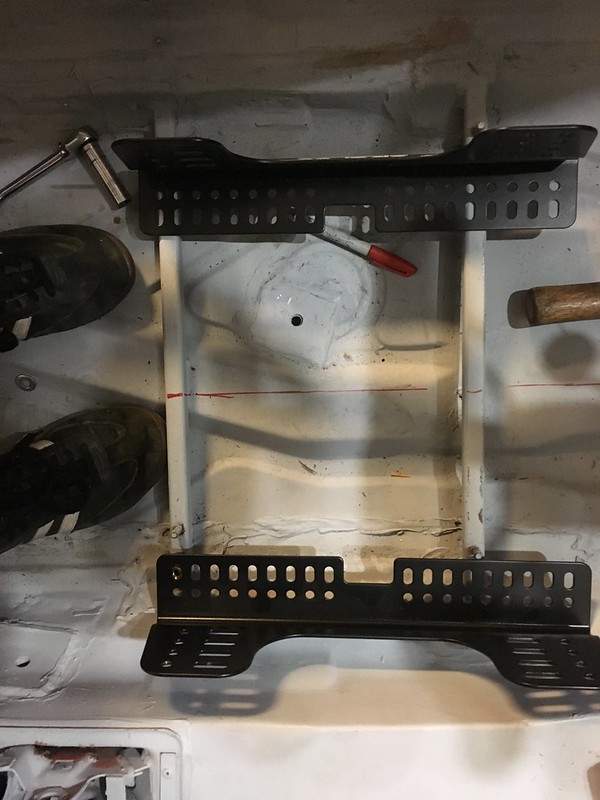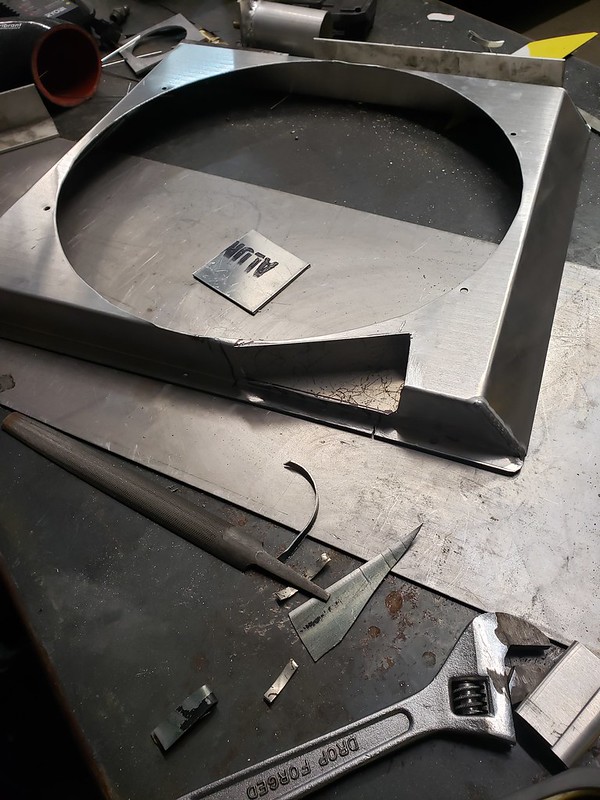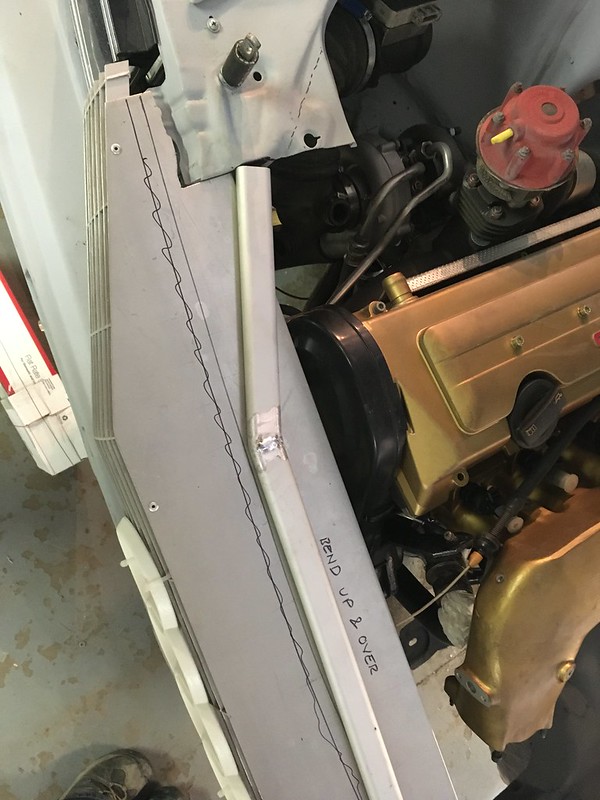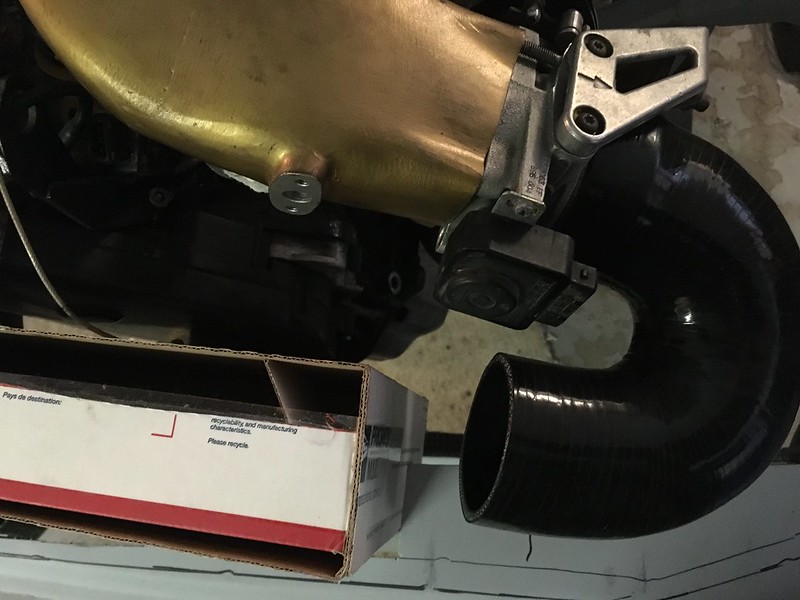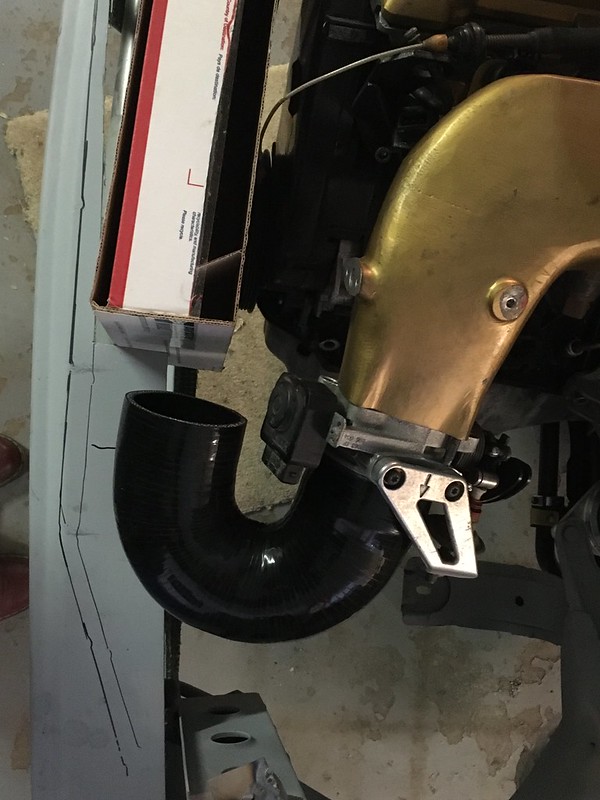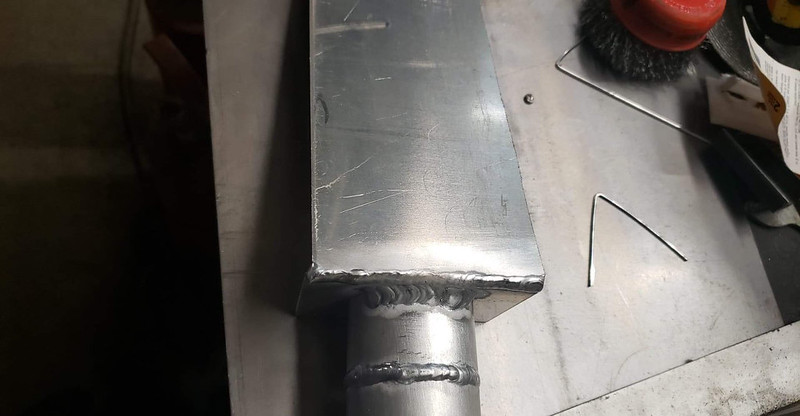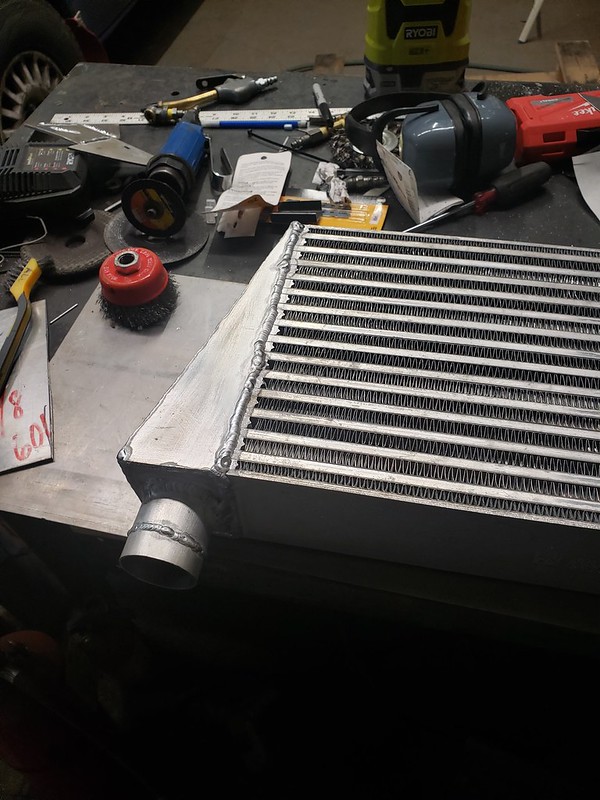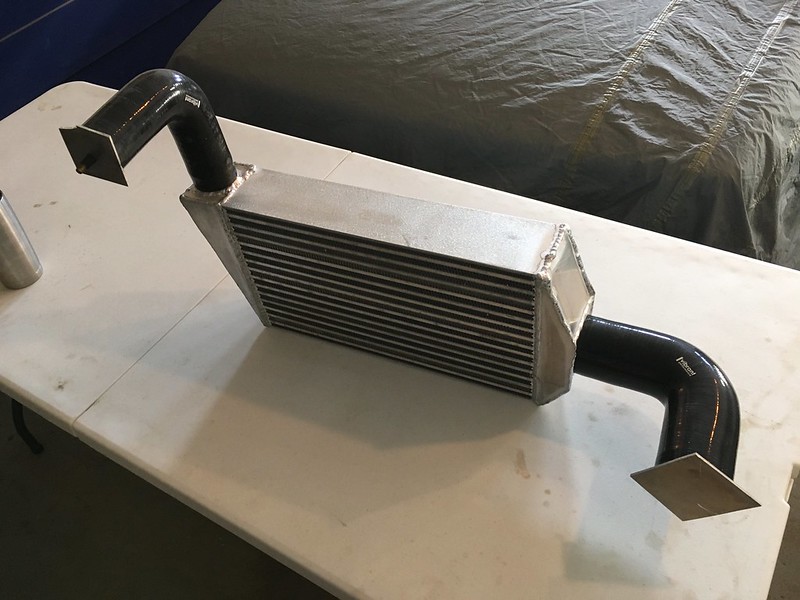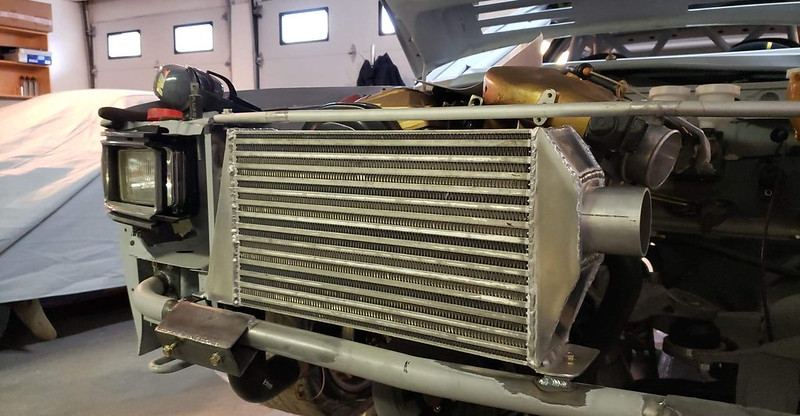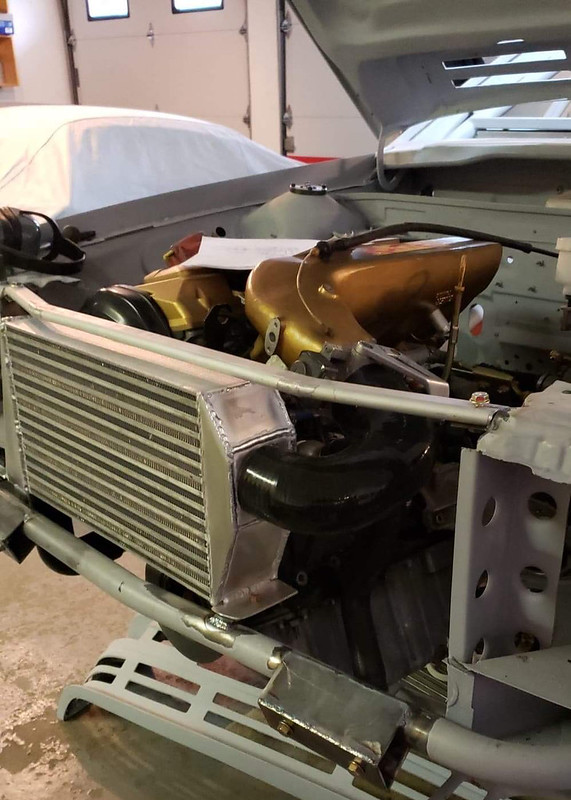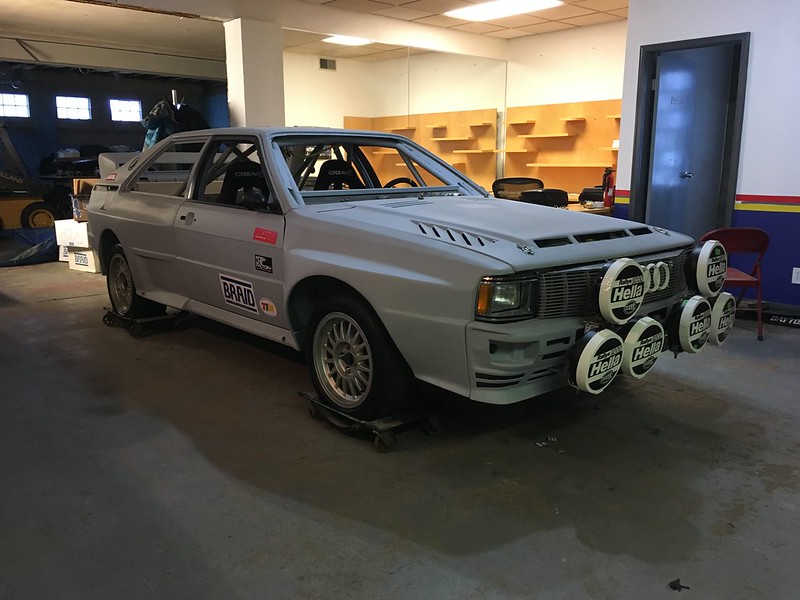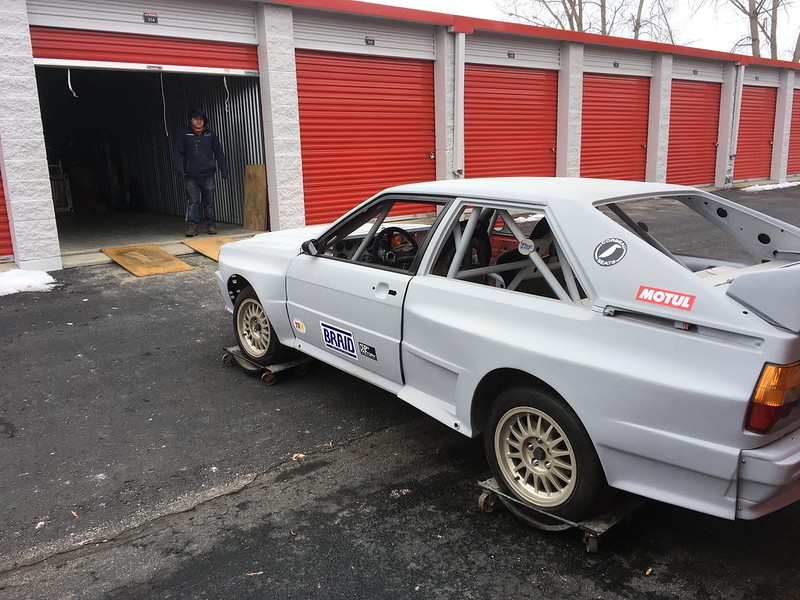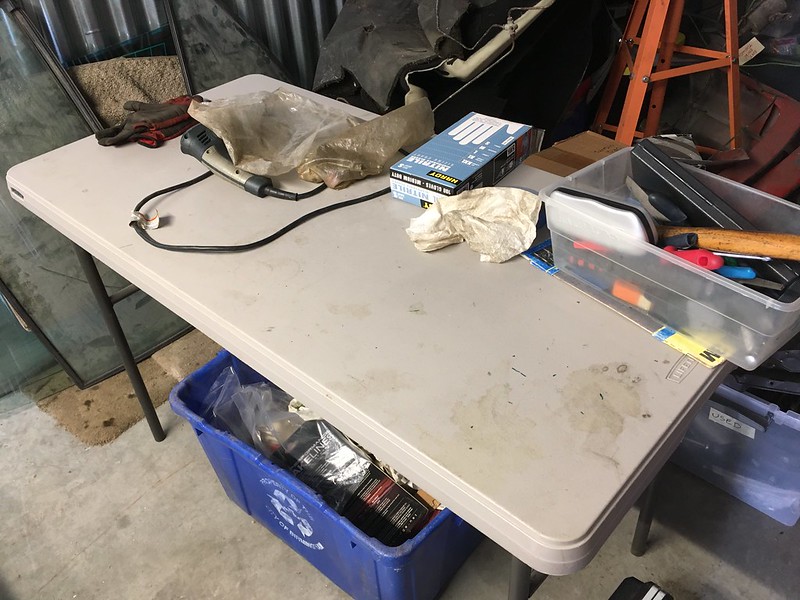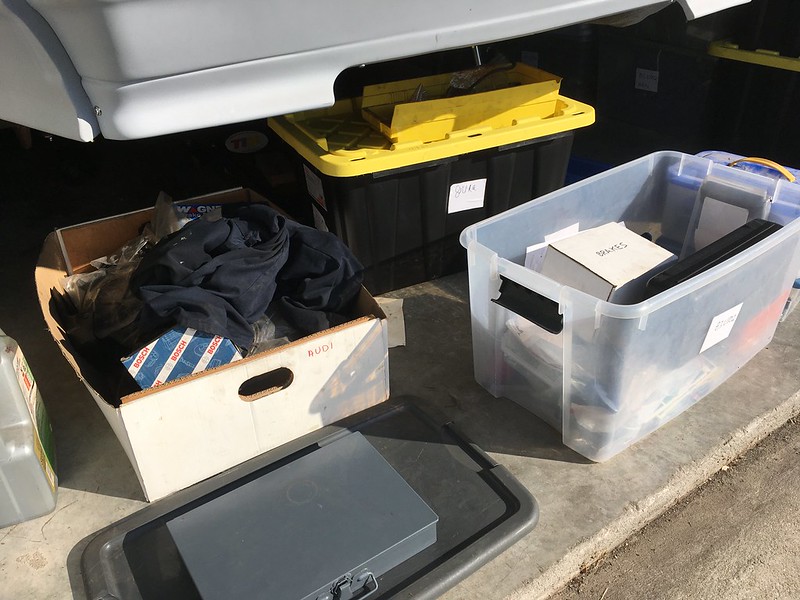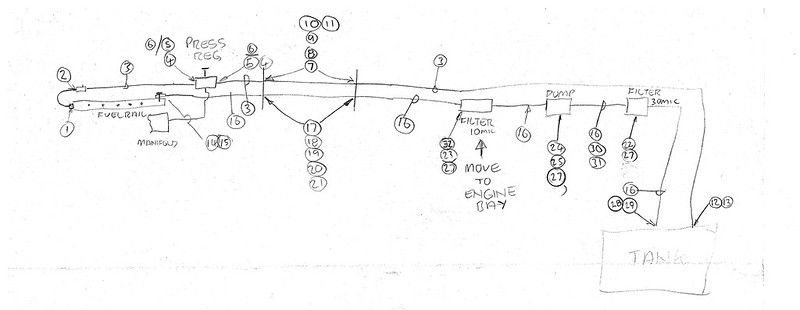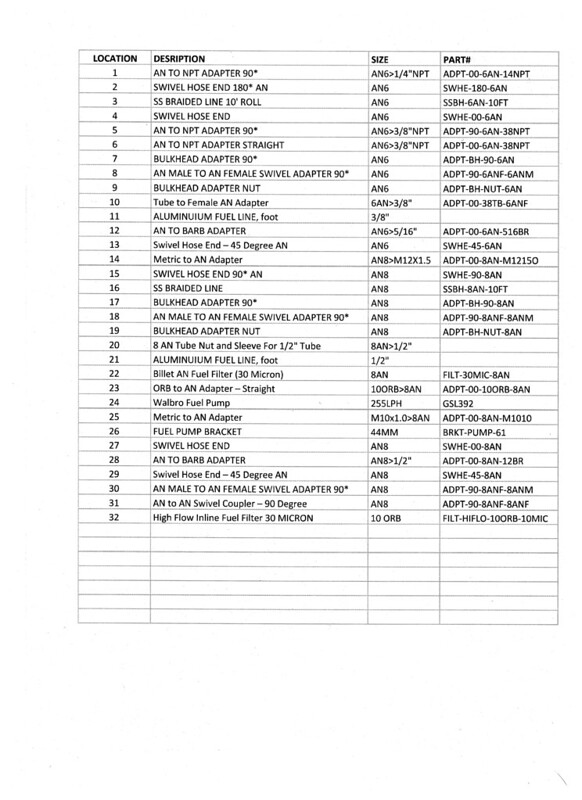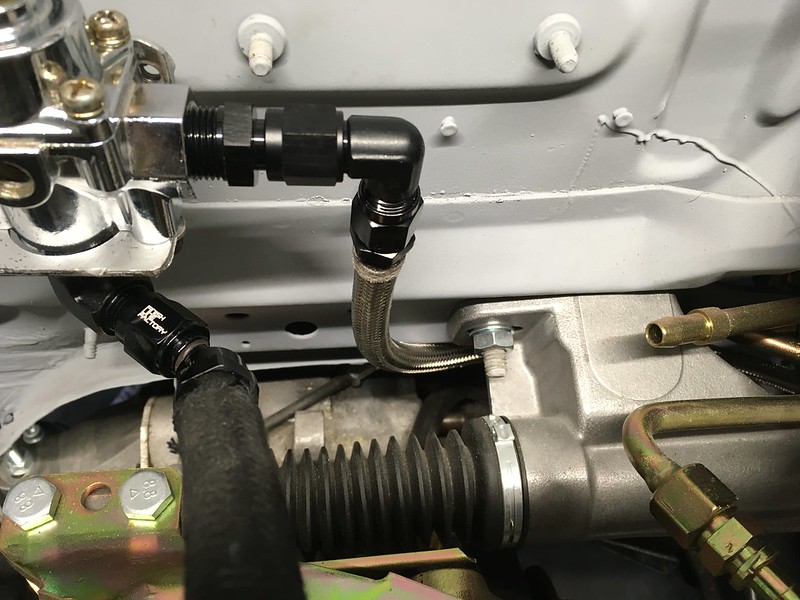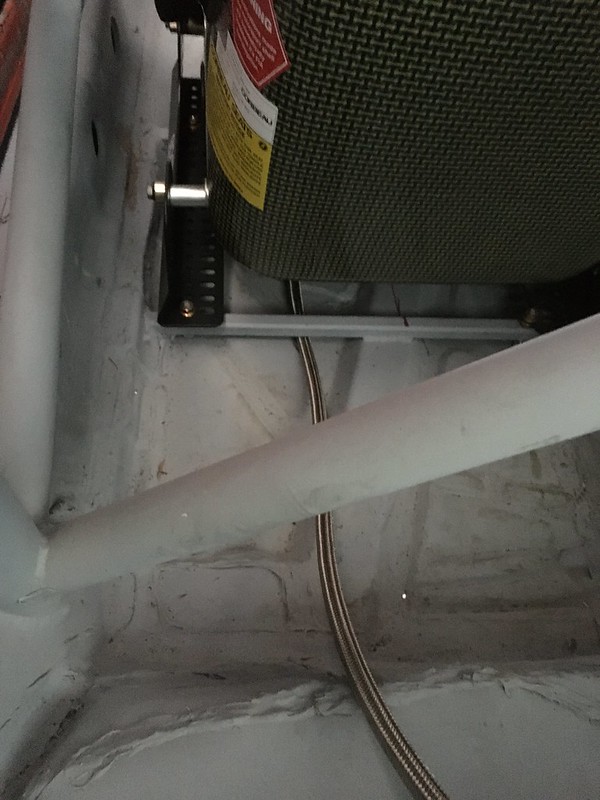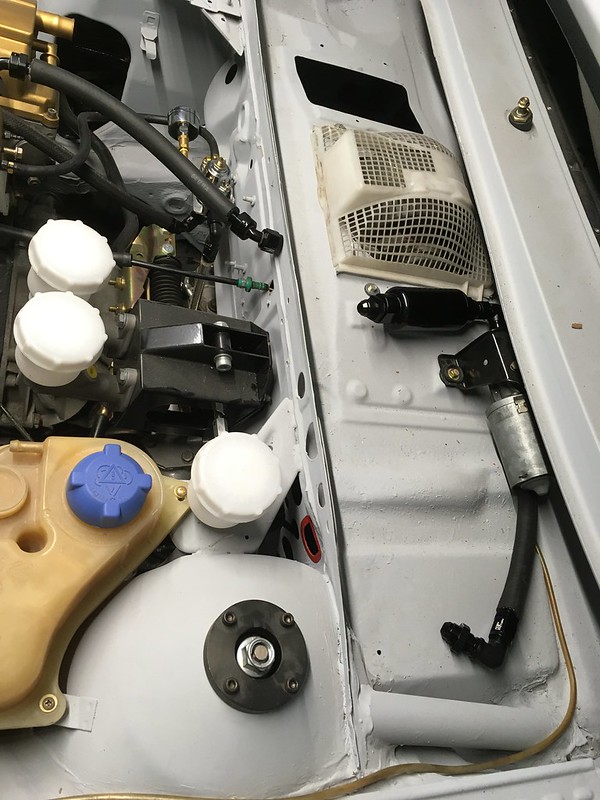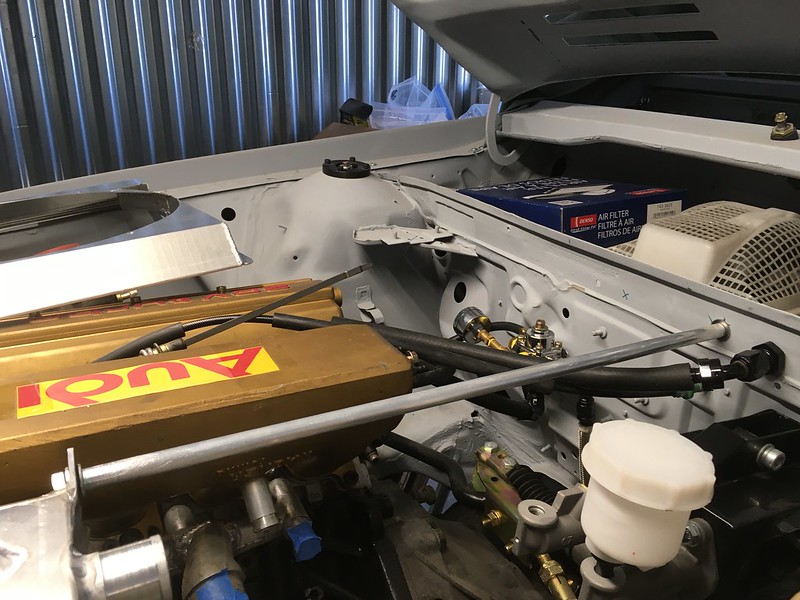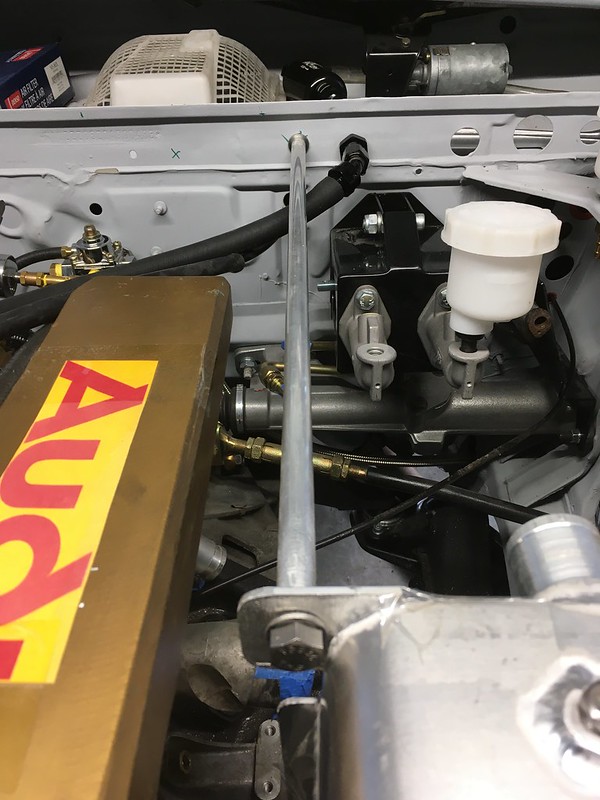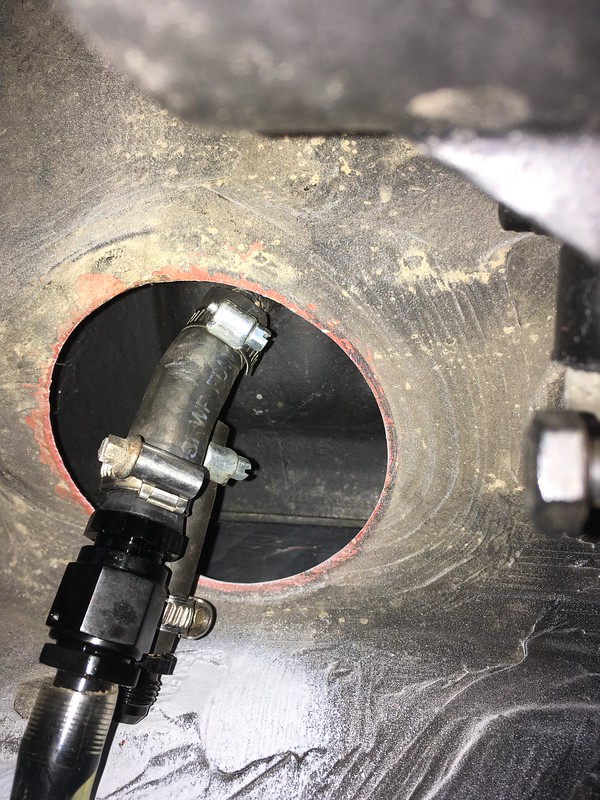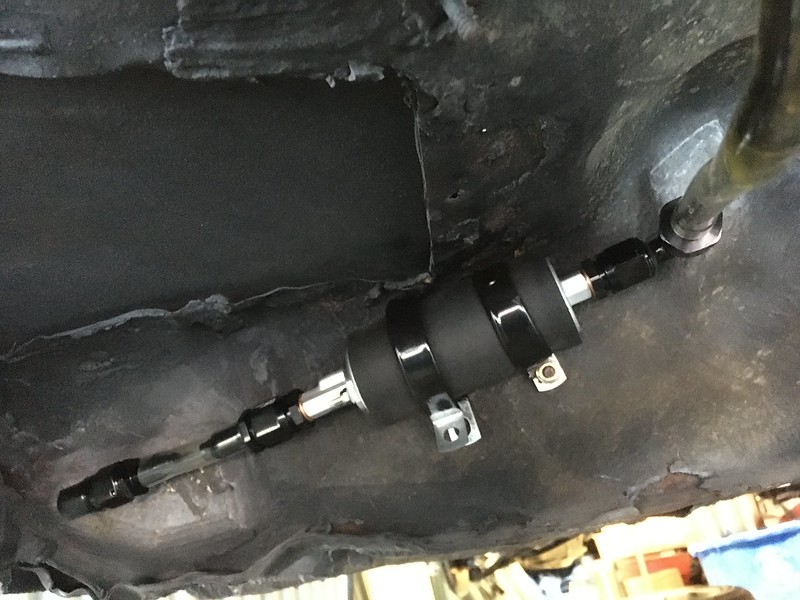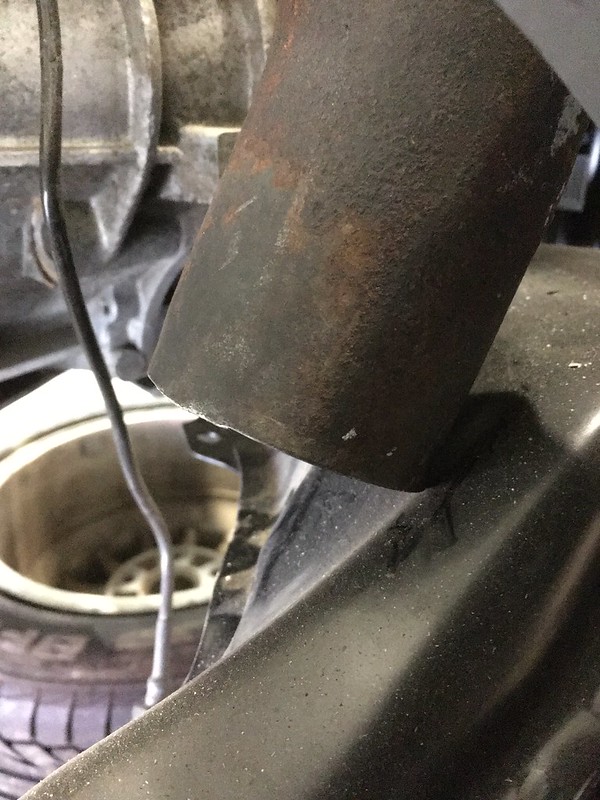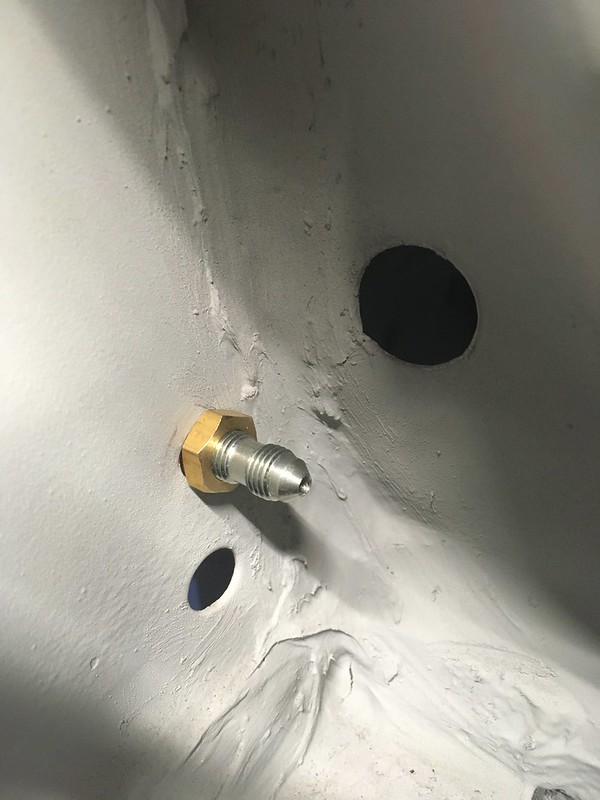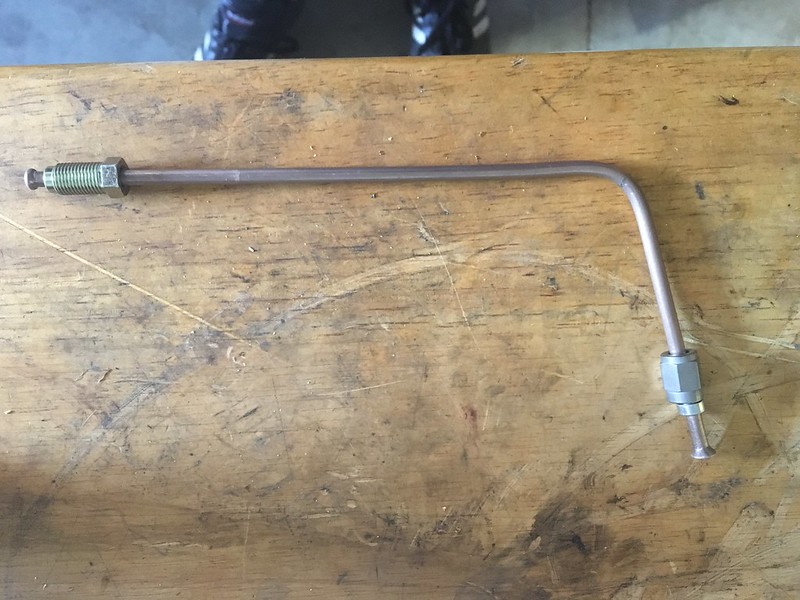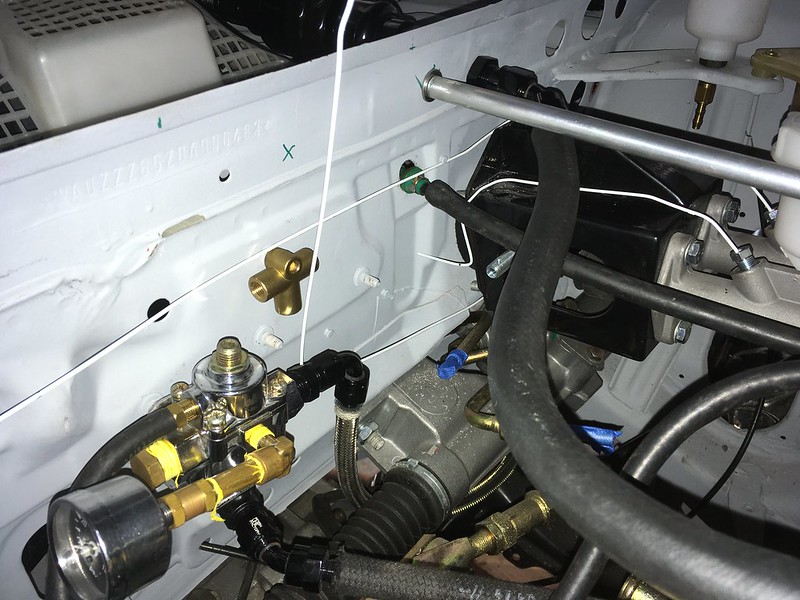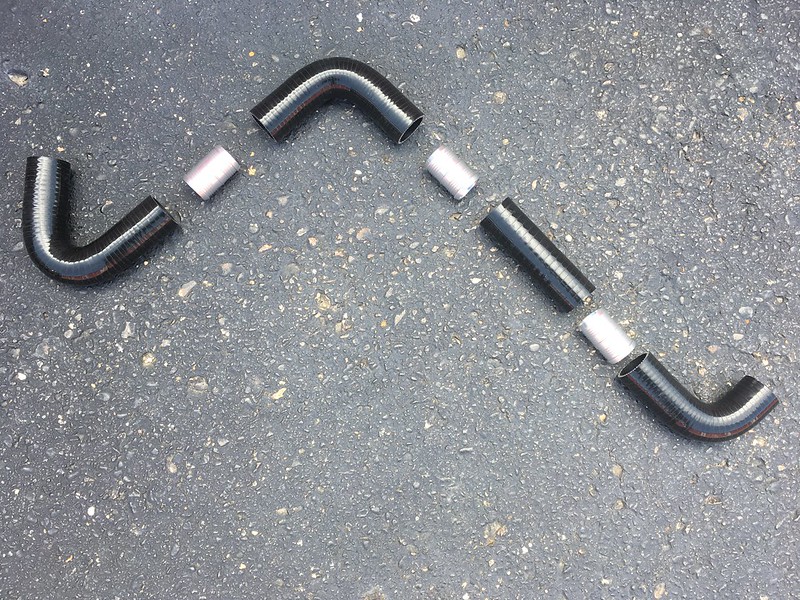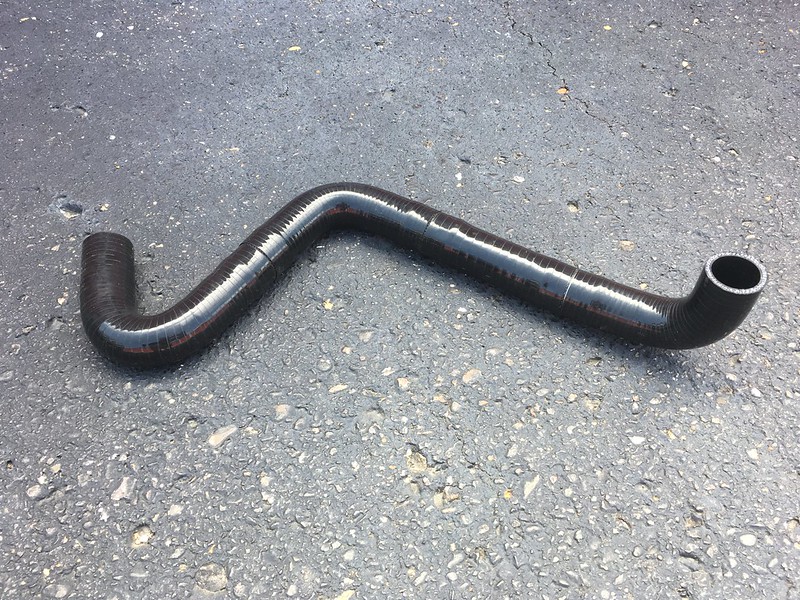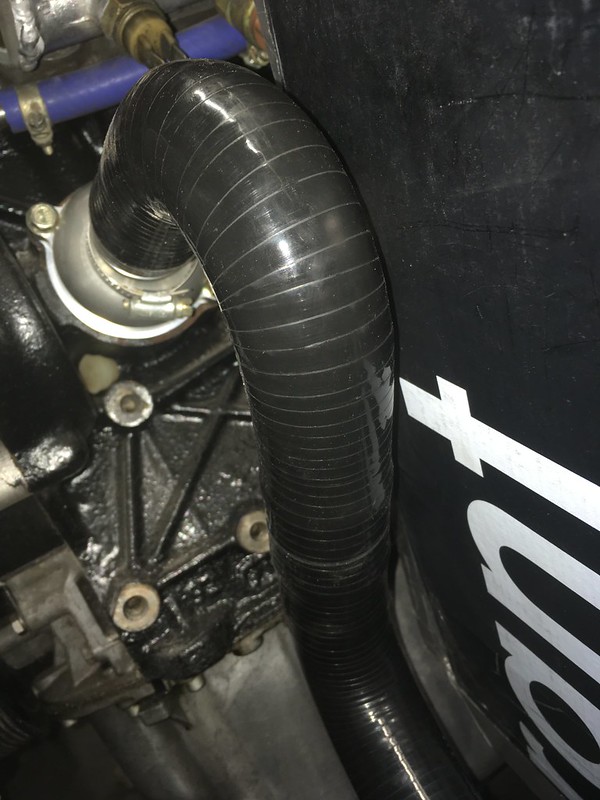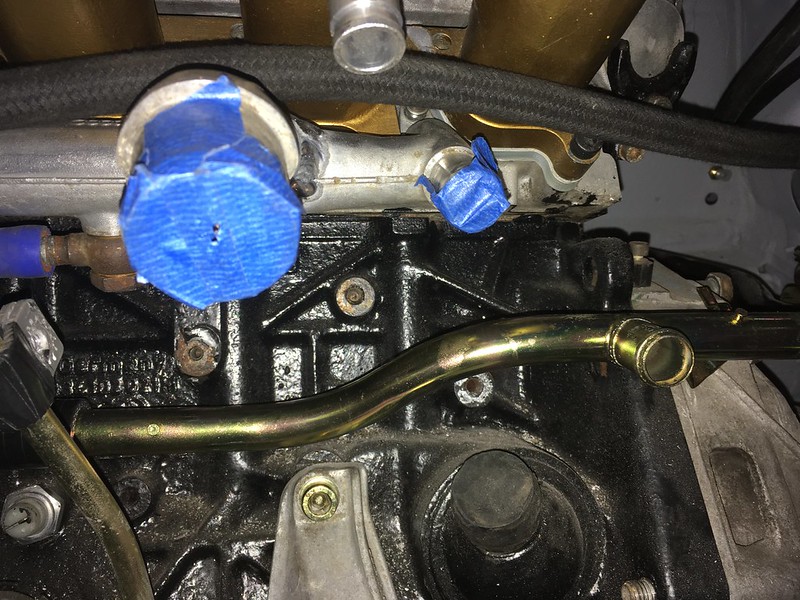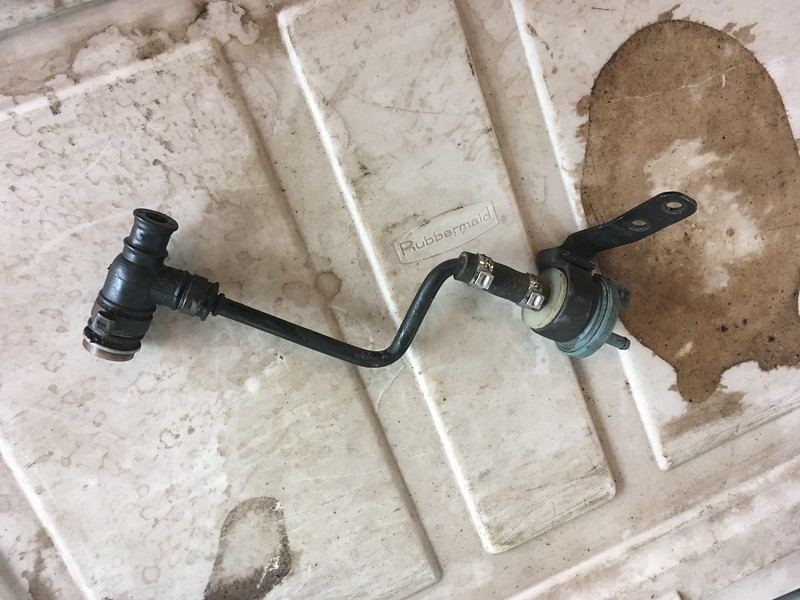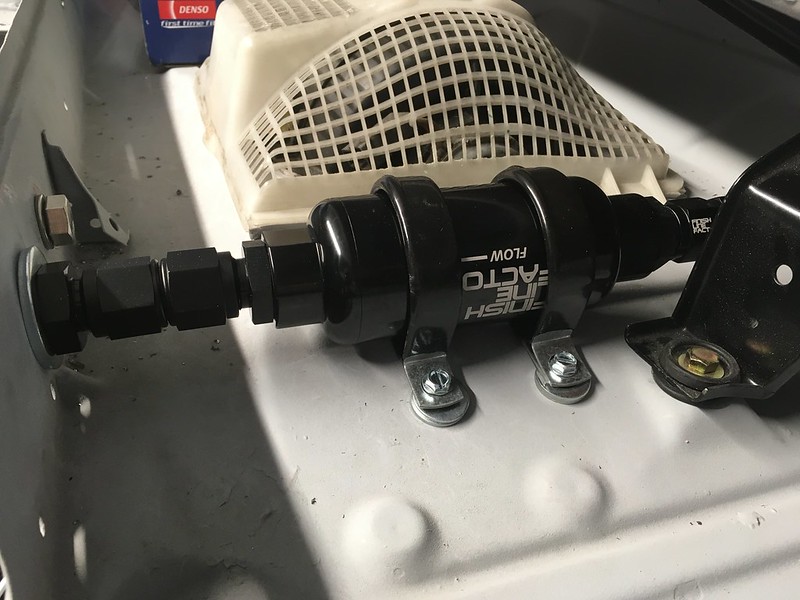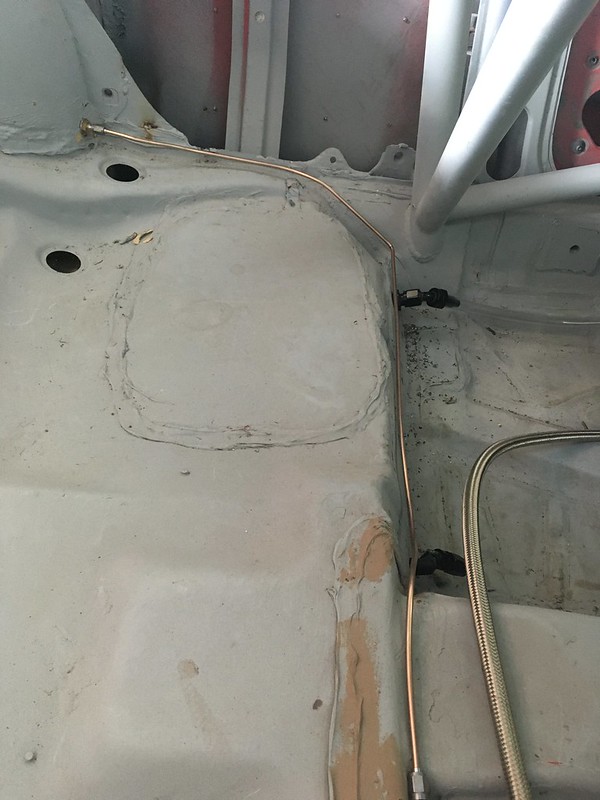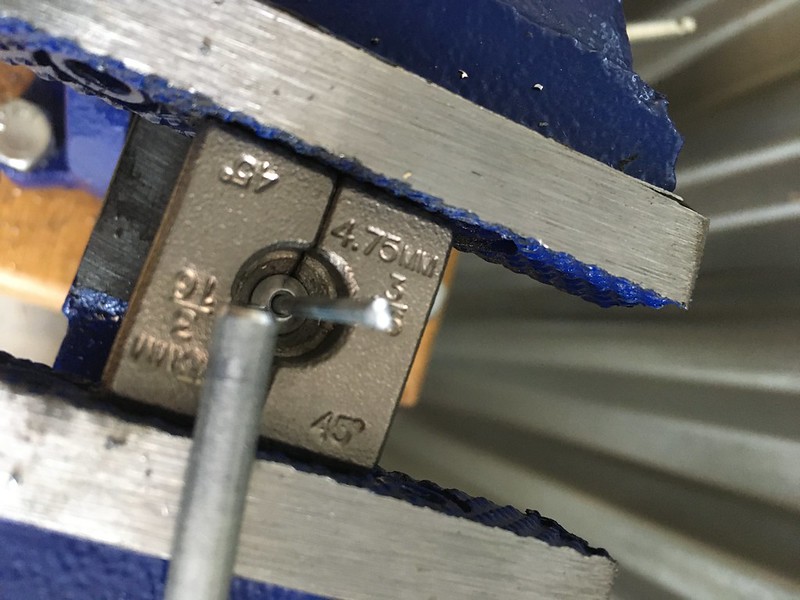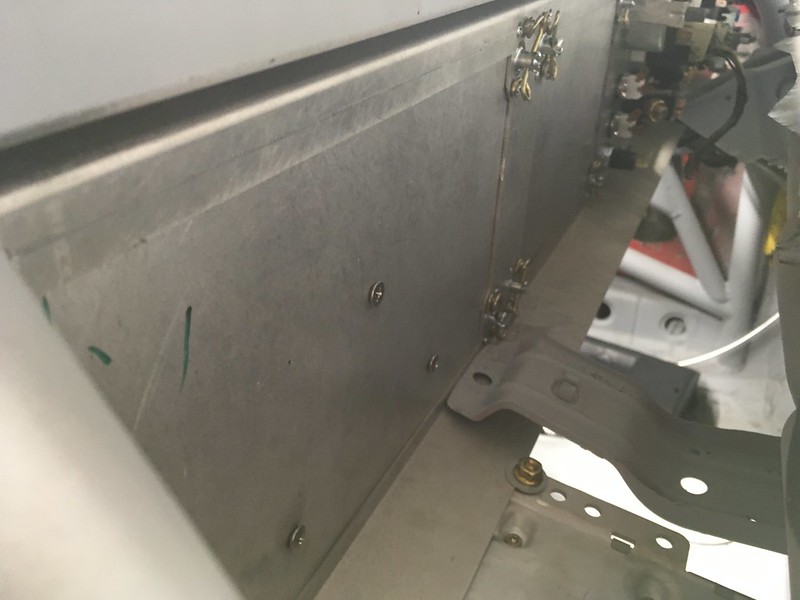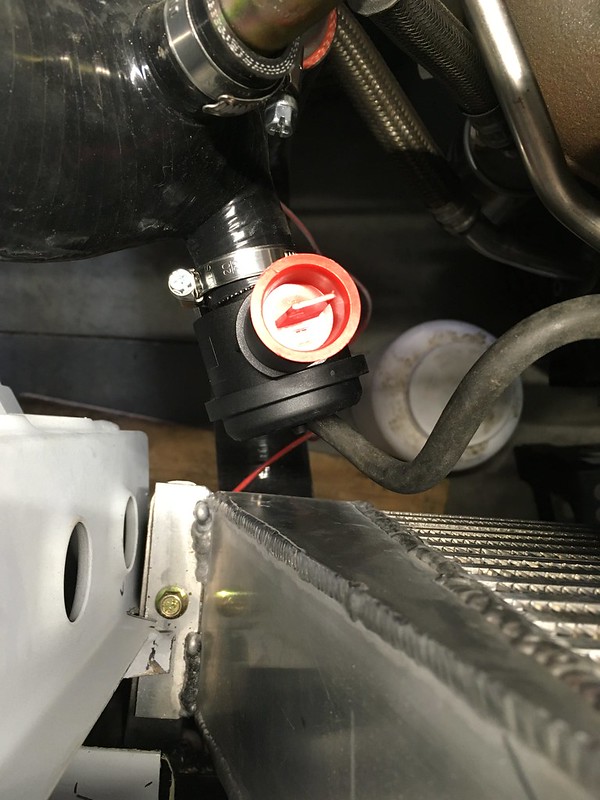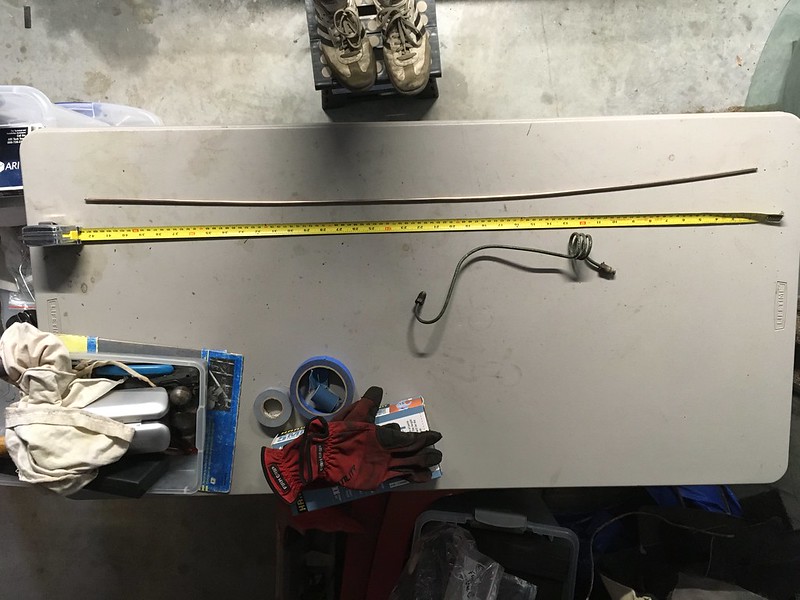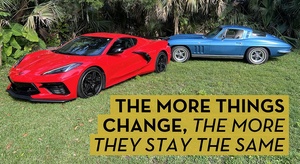Proper Gravel Rally Wheels!
We ordered more BRAID wheels for the car. This is the third set! We sold the first set including the tires. We have a problem. We justified this set of gravel wheels by ordering them double drilled so we can also use them on our 911 rally car. That car now has five sets of wheels yet only does about 300 miles a year. Did we mention we have a problem? Anyway, we think they look really cool.
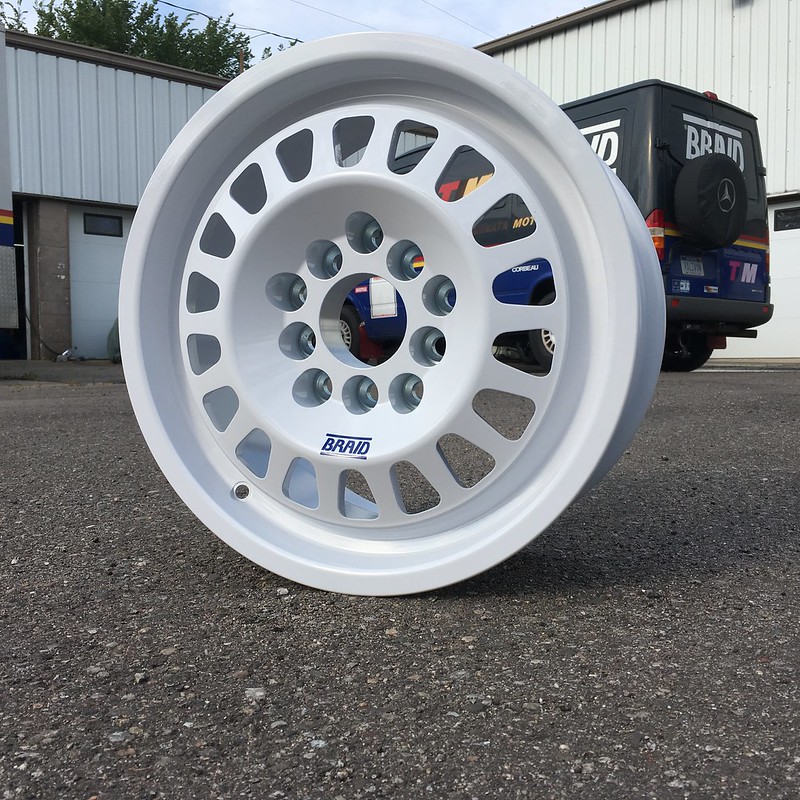


Even though they are ET20 they still sit pathetically inboard of the wide body fenders; as they should. LOL

These are a classic BRAID gravel wheel in 15x7. Let’s hope these MRF rally tires don’t age out before we finish the car!


THE ROAD TO RADWOOD - Part 2
We thought we should mount the transmission as well as the engine only has two engine mounts. We figured the whole package would be much more stable mounted together. We don’t yet have a flywheel or a clutch but neither of those are necessary just to bolt the two lumps together.


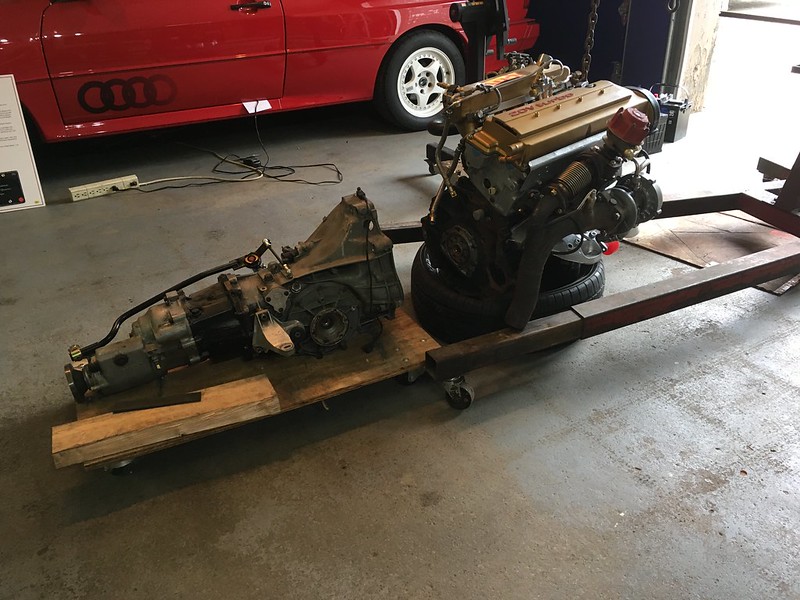

We recently sourced some pin stands from Motamec in England so our plan was to lower the car onto these initially as that would only mean dropping it a few inches. Plus, the screw jacks we planned to use at one end of the car were to long to allow the wheels to reach the ground in one go so it would have to be a two-step process anyway.


So our plan was to lift the rear using screw jacks on the subframe, as far apart as possible and the front using our engine stand. Once we could slide the table away we would incrementally lower each end of the car onto the pin stands then off those using our high lift jack. This is how it went:
That’s the first time the car has been on the ground in about fifteen years!
Now the easy bit, throw the engine in and put it in the trailer. How hard could that be with no front on the car:
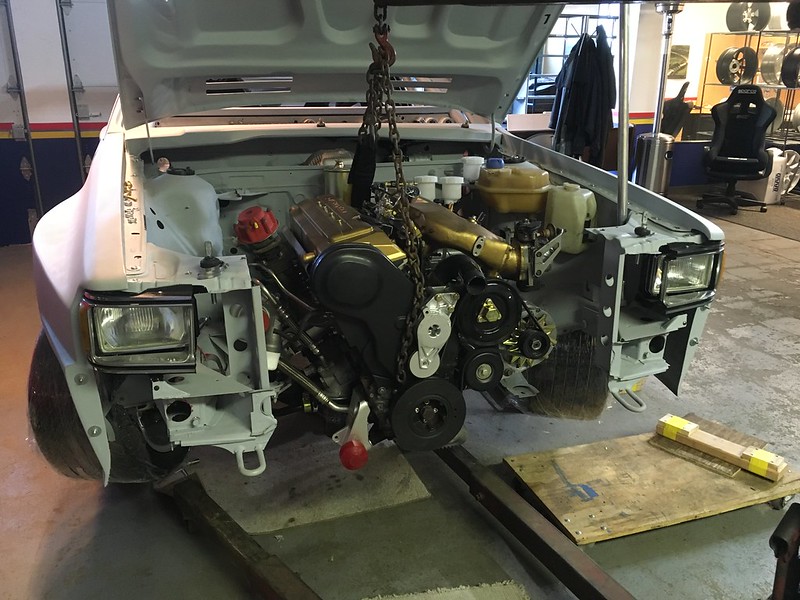
But wait, what? Who knew the AAN engine brackets wouldn’t line up with the Quattro engine mounts? Oops.
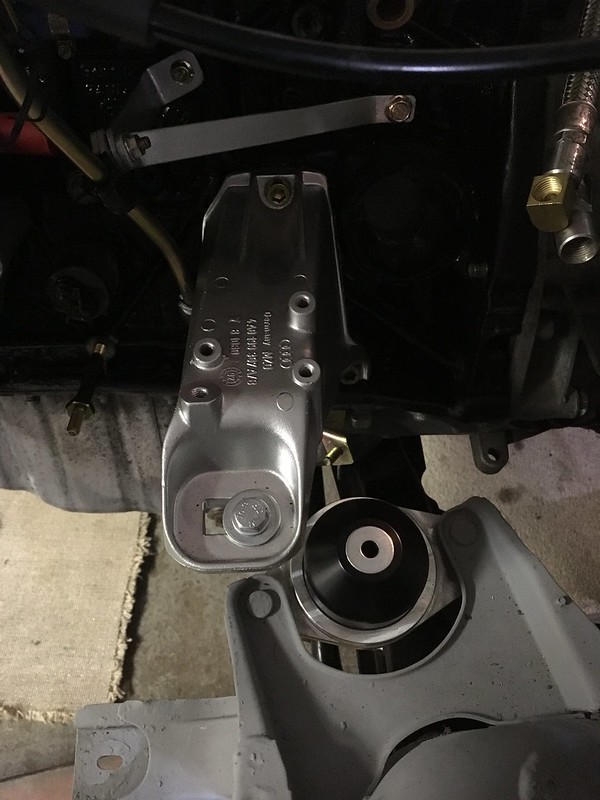

A quick swap to the 10 valve units and we were back in business:
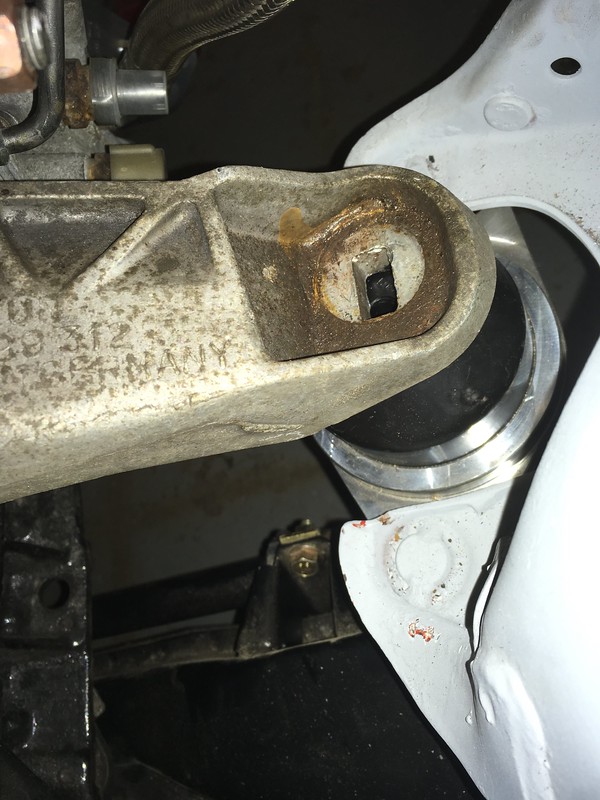
But what’s this? Now the hood won’t close!

Will we make it to Radwood after all? You’ll have to wait to find out.


We Made it to Radwood!
It turns out this super easy, bolt on aftermarket intake manifold just keeps giving……………us problems. Now the engine is in the hood hits the throttle body, even after we built a custom adapter to stop it hitting the alternator! Well, we soon realised we didn’t need a throttle body to push the car into the trailer so we took it off and adjusted the hood pins so it at least could be locked down. We’ll figure that out later.
So we pushed the car into the light of day. The first time it has rolled on wheels for fifteen years or so. It was during this process that we realised an eyeball alignment is not really accurate and properly aligned wheels make pushing so much easier! It wasn’t bad in a straight line but with the slightest amount of steering lock and it became very difficult. Still it looks pretty good in the day light.



And In. Yes, we used the trailer winch.

The car was very well received at Radwood and look resplendent parked alongside its stable mates.



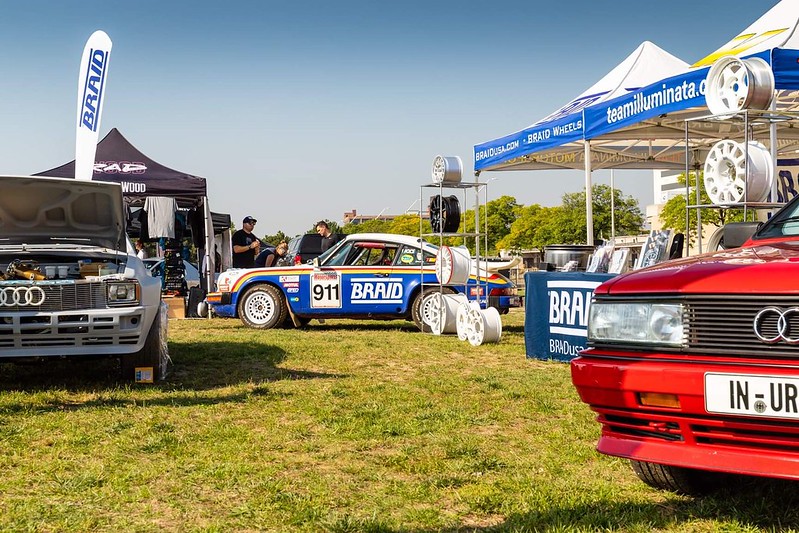
We must admit, getting the car in the public eye inspired us to push harder to get it finished. We might even have a deadline now!


MIRRORS
It’s nice to conquer the big projects like intercoolers and radiators but sometimes those plans get stalled due to parts availability or even just the magnitude of them. Then it can also be nice and quite gratifying to check off a small project, even something as seemingly trivial as door mirrors.
Yes, we installed the door mirrors. But first we had to track some down and then decide where to put them. These cars in period were never quite the same as one another but they all seemed to share a common mirror, the now ridiculously expensive, for a mirror, Talbot bullet-shaped classic:
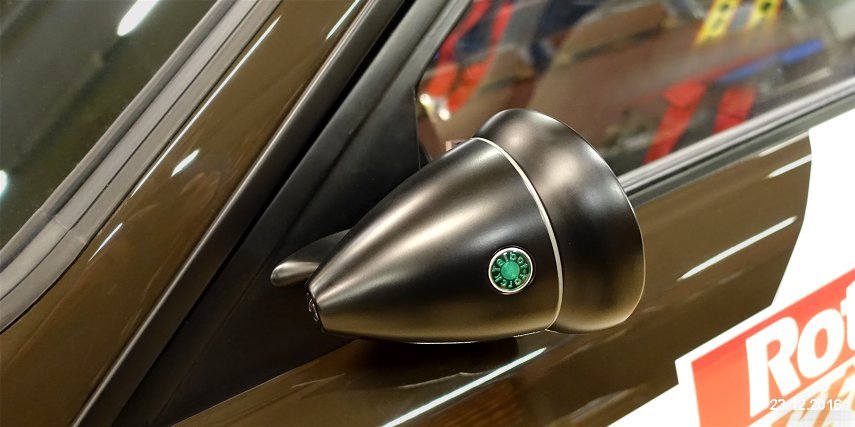
Price for new ones are over $300 each but, of course, something this easy to copy has been replicated by many and we found a set of knock offs in in England for just $65 .

Next massive decision: where to mount them? Some cars had them mounted to the doors in period, including the Rothmans cars after which ours is modelled. Others had them on the triangular part at the bottom of the window frames where the road car mirrors were.

Both locations position the actual glass in more or less the same place so functionally there is little to be gained with one or the other. If they mount to the doors they seem to be white and if on the window surround they are black. Also, if we mount them on the window frames we still have the problem of filling the hole left by the original mirror.
At this point is should be clear where ours are going. Yes, on the window frames. They are already satin black so will not need to be refinished and they will automatically fill that little triangular hole. Well, the mirrors won’t but the triangular plate we’ll have to make will.
First mockup took a lot of trial and error drilling.

Which left quite a few additional holes on the inside, which, to be fair, was always going to need a cover anyway.

We initially mocked it up in cardboard:

And then cut them out of 1/8” aluminum. A bit shorter as we realized we needed to extend the top bar in order to mount the door card.

But then we found a piece of very thin carbon fiber and decided that would be way more appropriate, especially as the surface wasn’t flat anyway.

We still made the outside pieced out of aluminum as they had to span a large void.


That gave us everything we needed.

Just had to slap it all together.
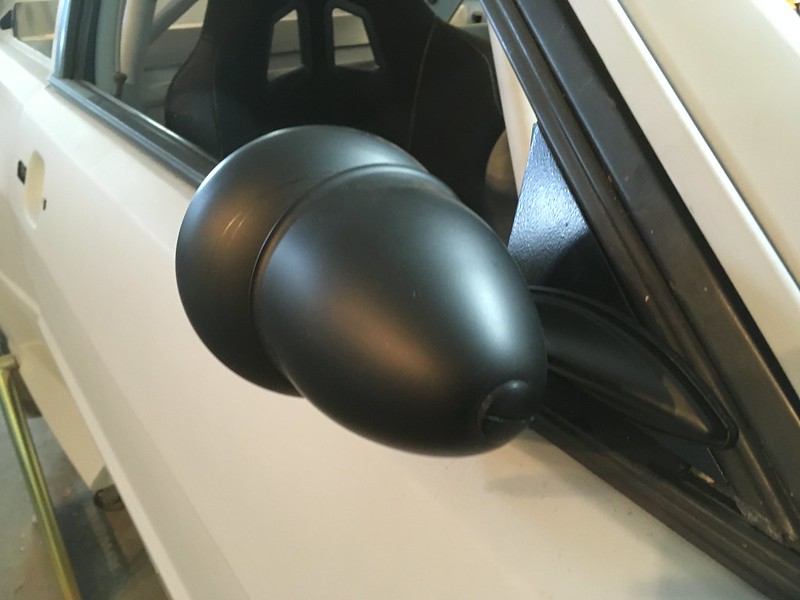



We may paint the screws and washers black one day.


Throttle body, power steering, alternator. Pick any two!
Yes, that's the conclusion we have come to trying to locate all the ancillary components in the engine bay. Right now, everything wants to be on the left side of the engine in front of the radiator. Remember, on these cars the radiator is not in front of the engine but to the side on the left. Because we are using an aftermarket intake manifold the throttle body is very close to the power steering pump. In fact, if we orient it correctly it is inside the power steering pump. We think we can rotate it 90 degrees and still mount it, though only one of the mounting holes lines up right now. Some adaptation will be necessary but we think we can make it work. Anyway, it has to be that way round to clear the hood and there is not really any room for an adapter. Even then, another issue is the outlet from the power steering pump still interferes with the throttle body, even after sourcing a really flat banjo bolt. Also, the outlet from the head coolant manifold is behind the power steering pump and very difficult to mount a pipe on. It's also heading in the wrong direction as it needs to end up behind the radiator. The coolant outlet from the block is also very tight where it passes the back of the power steering pump. Can we do without power steering?
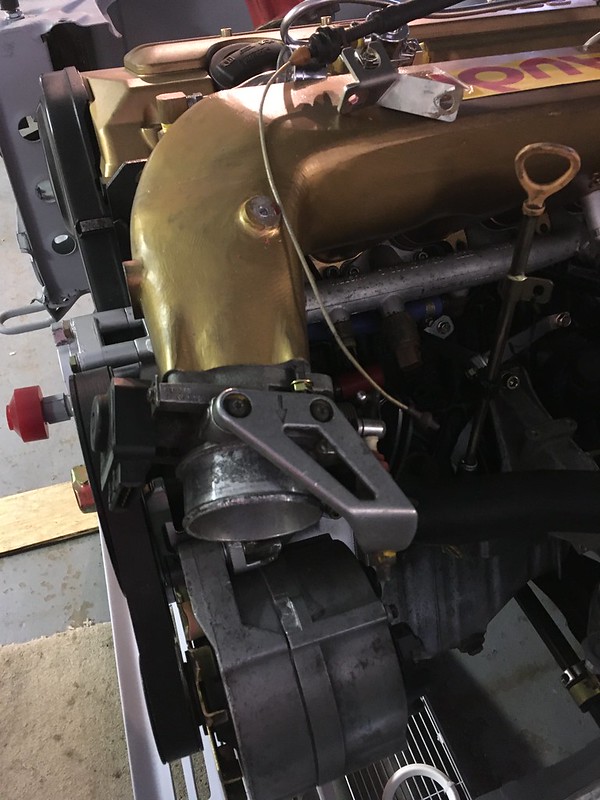
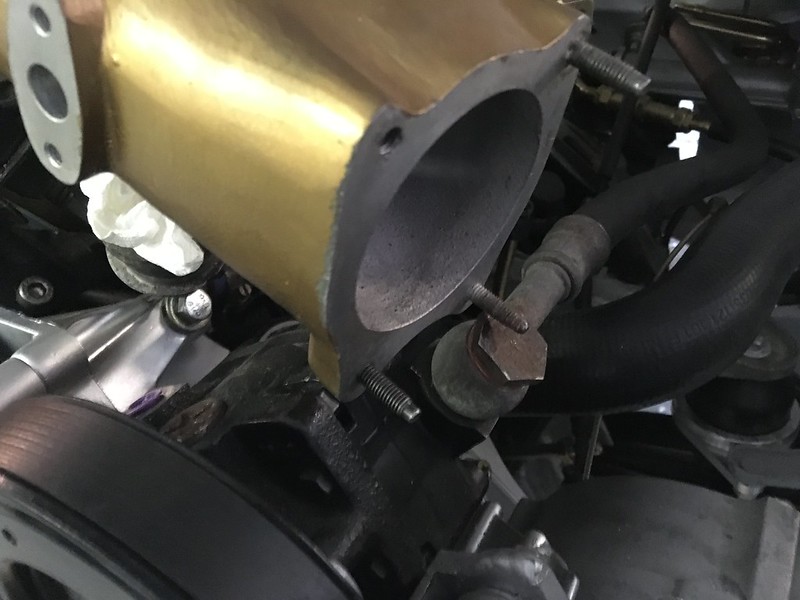
Certainly, if we remove the power steering pump from the equation it creates some room but we are then left with an alternator stuck way out in front of the radiator and without much triangulation for the belt and no free length for the tensioner to push on. Maybe we should convert the power steering pump bracket to a second idler.

Another problem came up though: we can't seem to find a replacement alternator with the 200 amps or so we think we are going to need to power the six driving lamps and everything else.
So now we have no power steering pump, no alternator and a throttle body that's held on with one bolt! What should we do? Well we think we have an elegant a solution. Firstly, why not use an electric power steering pump? They are readily available used from a variety of cars including Volvos, Toyotas etc. They can be mounted almost anywhere you can get lines and wires too as they obviously do not need a belt to drive them. They will also work even when the engine is not running which might be useful around the shop or if the engine blows up mid stage. Here’s an example of a Volvo unit.
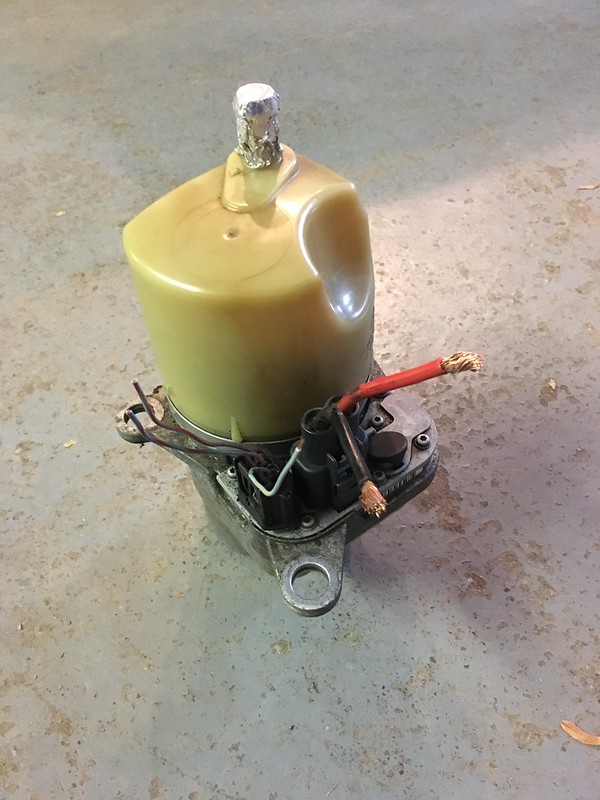
Then we realized, if we are prepared to make a custom alternator bracket, we could use any 200 amp alternator from any vehicle. It just so happens that we have to make a custom bracket for the front engine mount on the other side of the engine and there is a nice alternator sized space doing nothing next to that. Why not source an inexpensive 200 amp remanufactured alternator from a Ford truck and mount it on the right side of the engine on a custom alternator/engine mount bracket?
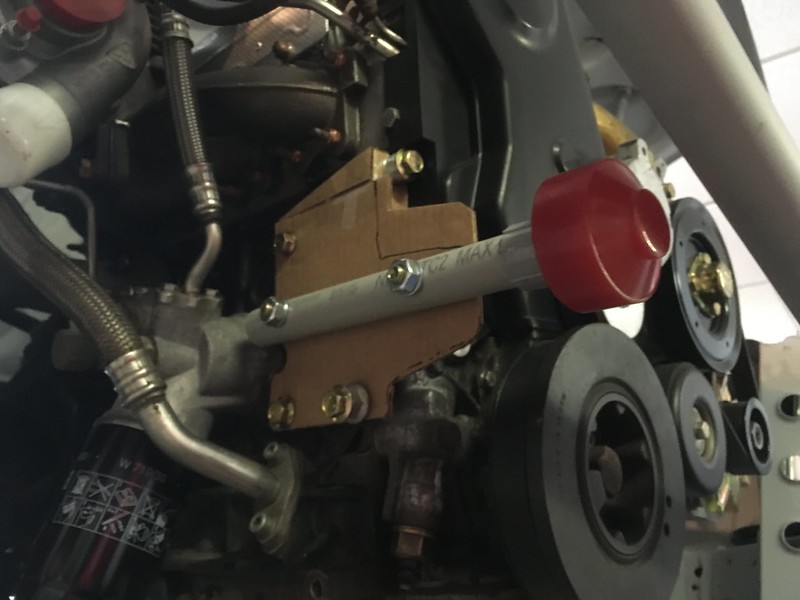
These two solutions, if possible, will then result in us having only an intercooler outlet pipe in front of the radiator which can’t be a bad thing for cooling air flow, right?
Subscribe to find out if any of these work out or if we go back to the drawing board.
Those metal brake lines... It may be just the color reproduction, but... Copper? NOT solid copper, right?












